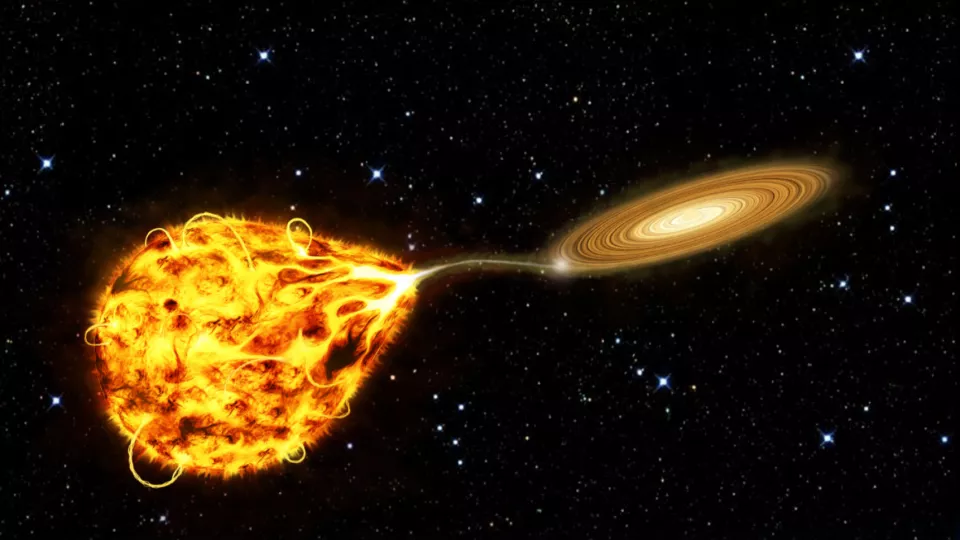Binary stars are systems containing two stars that orbit each other thanks to their mutual gravitational attraction. There is a range of different varieties of binary stars. A new study by researchers from Lund University, among others, has investigated binary stars consisting partly of a normal star such as our Sun, and partly a specific type of dwarf stars known as a B-type subdwarf. These subdwarfs are small, luminous blue celestial bodies heading for extinction. They are remains of dying red giants that have lost their outer layer of gas.
These kinds of binary stellar systems work extremely well as a type of research laboratory for investigating how stars interact with each other. For example, previous studies of binary stars have provided answers to how red giants lose their enormous mass of gas and turn into dwarf stars. The explanation of this process is not simply that the gas burns away; the gravitational pull of the other star also contributes by drawing some of the gas towards it – a form of galactic cannibalism.
But there are more questions the researchers are interested in investigating with the help of binary star systems. The current study looked at perplexing aspects of the binary stars’ orbits around each other. Certain binary stars have orbits of just a few hours, while others take several years to circle each other just once. The researchers now note that the different orbits of the binary stars can be explained by the evolution of the elements in the Milky Way’s past.
“Our study shows that the orbits are directly connected to the chemical history of our Galaxy”, says Alexey Bobrick, doctoral student in Astronomy at Lund University.
In the early days of the Milky Way, not many metallic elements existed, meaning the first stars had a very low iron content. In contrast, the newer stars that formed later in the Galaxy’s development had a significantly higher iron content. The difference in the amount of iron means the newer stars become up to 30 percent larger, so their orbits become correspondingly longer”, notes Bobrick.
The study is the first to connect the two major fields of research investigating the history of the Milky Way with observations and computer modelling of binary stars. The results give a clear image of how blue subdwarf stars are formed. These efforts are also producing new knowledge about the history of the Galaxy – a field of research that is actively studied at Lund. The current study may also be of use in the future when examining other types of binary star systems, for example, those containing stars who risk ending their lives in a gigantic supernova explosion.
